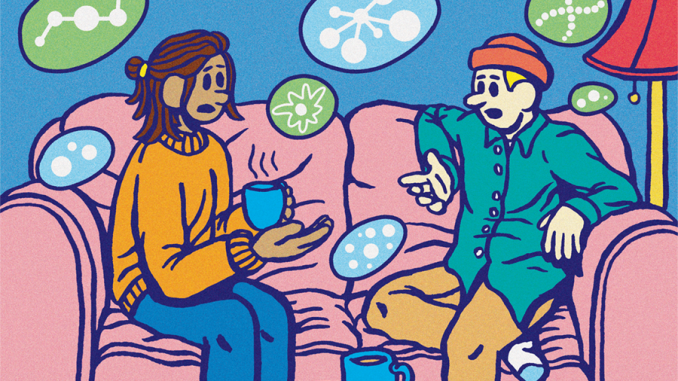
Although they’re heavily stigmatized, sexually transmitted diseases and infections are very common among college students, especially chlamydia, gonorrhea, HPV and syphilis.
Roughly one in four college students have an STD, according to Hartford HealthCare, a healthcare network in Connecticut.
This year, STD Awareness Week runs from April 10 to April 16 and aims to reduce STD-related stigma, raise awareness about how STDs impact people’s lives and provide people with the knowledge and tools to prevent, test for and treat STDs.
Many people who have STDs feel judged because of the shame associated with them, fearing others may see them as dirty or look down on them if they’ve had sex with multiple people. This stigma can contribute to self-hatred and depression after an STD diagnosis.
Students must create spaces for conversations about STDs to take place within their friend circles or through sexual health programs by making peers aware of how common STDs are and sharing resources and prevention strategies. Talking openly about STDs and STD-related resources will provide people with the knowledge to reduce their negative perceptions of STDs, along with strengthening relationships and making it easier for students to access testing and treatment.
Among the largest U.S. cities, Philadelphia has the fourth highest STD transmission rate, with more than 2,800 cases per 100,000 residents, Al Día News reported.
The barriers to discussing sexual health, like not receiving a comprehensive sexual health education, can cause people to develop a negative perception of STDs, said Aisha Bhimla, a postdoctoral fellow at the Center for Asian Health, and the project manager for the Adolescent STD Prevention Program, a project aiming to reduce STDs among Asian, Black and Latino youth in high poverty communities of Philadelphia.
“There just needs to be more conversations and more resources provided, also to destigmatize,” Bhimla said. “So, making it accessible for treatment and using different routes to reduce stigma around it.”
Students must correct misconceptions about STDs — like beliefs that only people with multiple partners can contract STDs or people with STDs are unhygienic — to combat the stigma surrounding them.
When countering these stigmas, it’s important to consider how they disproportionately impact people of color and ensure they have the resources they need and are comfortable discussing STDs with peers in their friend circles or through formal sexual health programs. This can be achieved by not viewing STDs as permanent and knowing how common and treatable they are.
Anyone who’s sexually active can contract an STD, yet they disproportionately impact people of color. They’re more likely to experience conditions like poverty, housing insecurity and a lack of access to medical insurance or providers, all of which leave people more vulnerable to contracting STDs.
In comparison to non-Hispanic white people, non-white Hispanic or Latino people are one to two times more likely to contract STDs, Native American people are three to five times more likely and Black people are five to eight times more likely, according to the Centers for Disease Control and Prevention.
People seeking care can use Hued, a website that connects patients of color with medical professionals of color who understand the needs specific to them. The National Queer & Trans Therapists of Color Network brings together queer and transgender people of color with queer and transgender mental health practitioners of color.
Additionally, GetTested, a national STD testing locator, allows anyone to find nearby free or low-cost STD testing.
College students are in a unique position because many are given more freedom than they’ve ever had to experiment with their sexuality for the first time, said Brittany Robinson, the wellness education program coordinator at the Wellness Resource Center.
The WRC offers two free packs of safe sex supplies per month and wellness consultations for students to discuss topics like sexual health with professional staff.
Talking openly with one another about STD prevention resources will help students feel more comfortable using them, especially services for testing. Many couples come to Student Health Services to get tested for STDs, and it’s something more couples should be doing to stay safe, said Dorrit Sterner, a staff physician at Student Health Services.
“I have seen recently a lot of couples will come in and get tested before they start having sexual activity, and I think that’s a healthy thing to do,” Sterner said.
Partners who get tested before their first sexual encounter greatly decrease the risk of transmitting an STD to one another, so not only can they keep themselves safe, but they can establish honesty and trust in the relationship.
By making people more comfortable talking about STDs and increasing access to resources for testing and prevention, STD-related stigma can be greatly reduced and strengthen relationships with partners and peers.


Be the first to comment